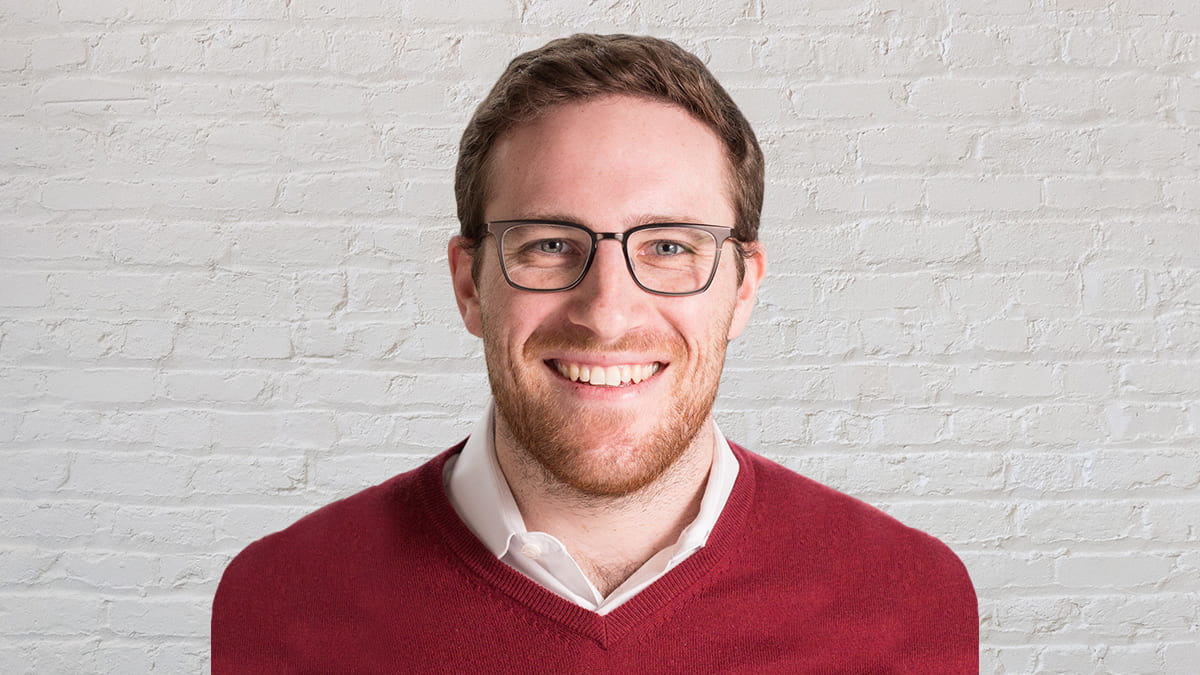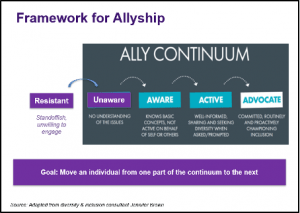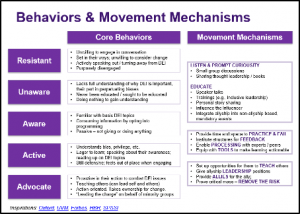Allyship for Womxn in Kellogg’s E&W Program: 1% Better Than Yesterday

By Connor Clancy, E&W 2021
Board Member and Manbassador, E&W WBA
Let’s set the scene. I’m in class at good ole’ Wieboldt. It’s case discussion time and I’m in a room (Zoom breakout room these days) with my group. The group dives in, debating different ideas back and forth. Midway through the conversation, another male student says, “Hey has anyone been grabbing notes?” The team “naturally” looks at the one womxn group member. Feeling obliged, the womxn group member says, “Oh ya, I’ve been taking notes.” The team continues without much thought as to what just happened. I stay silent. Near the end of the discussion, the group begins to wrap up and assign action items. Looking at the one womxn group member who had been taking notes, it’s a “natural” conclusion that this group member will also set up the group OneDrive folder, schedule follow-up meetings and post notes in the Slack group. Yet again, the burden is placed on womxn. Yet again, this goes unnoticed and uninterrupted.
There’s a problem…still
This example where womxn are expected to lead the “office housework” is one of MANY where womxn are treated with less equity and inclusion than their male-identifying counterparts. And the examples are abundant in the classroom, at work, and even in daily living with family and friends. While many think we’ve reached gender equality, we haven’t. Take your pick at the study that substantiates this claim (seriously, search around on Google for five minutes, and you’ll have plenty to choose from — my personal favorite is the research completed by the UN Department of Economic and Social Affairs).
Leaders and anti-sexism activists around the world continue to scratch their heads — what can we do to close the gap and make a more equitable world for womxn?
At Kellogg, we are fortunate to have a strong, established and influential E&W Women’s Business Association (WBA). This is common across many business schools where womxn are excelling personally and professionally (my partner is one of them!!!). In 2013, HBS partnered with men at the school to take part in anti-sexism work, establishing a formal program designed to bring male students into gender inequality work. The men participating came to be called “Manbassadors,” (synonymous with “male ally for womxn”), and since that time Manbassador groups have sprung up across MBA programs, including at Kellogg.
A framework for allyship and manbassadors
At the start of this year, I was fortunate to begin leading Kellogg’s Evening & Weekend Manbassadors group as I felt compelled to more deeply “get in the game.” As a white, heterosexual male, I realized I have privilage that others do not — why not put that to good use?
In partnership with the WBA (shoutout to my womxn leadership, Nehali Patel and Kayla Silverstein!), we aimed to build on the foundational work established by classes before us. Thinking seriously about the importance of allyship at Kellogg, we started with the school’s mission statement: to educate, equip and inspire brave leaders who build strong organizations and wisely leverage the power of markets to create lasting value. We reckoned that allyship, and the role of Manbassadors, had a really important part in living out this mission:
- Brave leadership requires bringing everyone along…not just some.
- Strong organizations are diverse, and we must understand this diversity.
- Value is in the eye of the beholder and we must understand all types of perspectives to know how to create this value.
Okay, got it. Allyship, Manbassdors = good for Kellogg and the right thing for society.
The first thing we recognized was that every male would be at a different place in their womxn-advocacy journey. And if we wanted to empower males as allies of womxn, we needed to understand where people are today and move them to the “next stage in their journey;” said differently, changing hearts and minds wasn’t going to happen overnight, rather it would be a progressive process.
As all good MBAs are taught, we started with a framework. We found DEI consultant and author Jennifer Brown’s Allyship Continuum to be simple and elegant (note she has since updated her framework, but we really liked the first one). Paired with our own research, this helped us develop what we called a “Behaviors & Movement Mechanisms” framework. These two mental models gave us the ability to “segment the market” and more effectively target programming.
Putting allyship theory into action
After establishing frameworks, our first question was, “Well, where do we think most of the Kellogg population is today?” We found there isn’t exactly an easy way to measure the health of allyship (most of the data is unobservable), so we pulsed different groups at Kellogg. From those conversations, we hypothesized that the student body fell somewhere between unaware and aware. Thus, we knew our first action focused on commitment and education. Accordingly, we created the Manbassador’s Pledge to drive self-identification of allyship. No, this doesn’t necessarily mean someone is an ally for womxn — that badge of honor is given from womxn — but it was an important first commitment for many men at Kellogg and provided a starting point for engagement. With that engagement, we then equipped these men with a Manbassador’s Toolkit and several programming events, including, “Allyship: Impact and Intent,” an event that featured a panel of womxn moderated by Professor Amy Hauenstein sharing their experiences, and, “Allyship Speed Dating,” an event that will allow males to learn allyship strategies from each other.
While there’s so much more to do, we are excited by the progress. To date, we’ve had an over 110% increase in males identifying themselves as Manbassadors, indicating we are beginning to move parts of the Kellogg population into the Aware and Active development stages.
Where to go from here
For starters, if you are a male in Kellogg’s Evening & Weekend Program and want to begin your journey towards advocacy for womxn, take the pledge (and while you’re at it, convince your friend to take the pledge too!). No, this doesn’t make you an ally overnight — that will take diligent, thoughtful, repeated and public action day in and day out — but it’s a starting point. Next, as you go on your journey, create an informal “board of advisors” — a group of other men that can support each other in the journey and a few womxn who can provide feedback, a sounding board and guardrails so you don’t venture into “savior-like behavior.” And finally, remember that allyship isn’t a check-the-box activity. You’ll always be an “in-progress” ally. This concept can be hard for life-long achievers — if it is for you (as it was for me), I highly recommend reading Simon Sinek’s “The Infinite Game” for applicable theories.
And for any other groups out there, I’d argue these same frameworks apply. Being an ally inherently will be different for different races, ethnicities, nationalities, social classes, religions, sexual orientations, ages and other dimensions of identity. But I do believe the fundamentals are the same — figure out where you are today, strive to be 1% better than you were yesterday to progress yourself along the continuum, and enter into supportive communities that value the equity work you want to do in this world.


